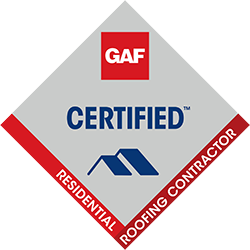Your roof is a crucial barrier that protects your home from the elements, but it can also attract unwanted visitors like pests and wildlife. Animals such as squirrels, birds, raccoons, and insects can cause significant damage to your roof and attic if left unchecked. Protecting your roof from these intruders is essential for maintaining its structural integrity and avoiding costly repairs. In this blog post, we’ll explore effective ways to protect your roof from pests and wildlife, helping you keep your home safe and secure.
1. Seal Entry Points
The first step in protecting your roof from pests and wildlife is to seal any potential entry points. Animals can squeeze through surprisingly small gaps, so it’s important to inspect your roof and attic for openings. Common entry points include:
- Holes or gaps in the roof: Look for any gaps around vents, chimneys, or where different roof sections meet.
- Damaged shingles or flashing: Broken or missing shingles and damaged flashing can create openings for pests.
- Cracks in the soffits or fascia: These areas are often vulnerable and can provide access to the attic.
Seal any openings with appropriate materials, such as metal mesh, caulk, or new shingles, to prevent animals from entering your home.
2. Trim Overhanging Branches
Trees that are too close to your home can provide easy access for wildlife to reach your roof. Squirrels, raccoons, and other animals can use overhanging branches to jump onto your roof and find their way inside. To minimize this risk:
- Trim branches: Keep branches trimmed back at least 6 to 10 feet from your roof. This not only prevents access but also reduces the risk of branches falling and damaging your roof during storms.
- Regular maintenance: Make trimming overhanging branches a regular part of your home maintenance routine to ensure ongoing protection.
By creating a buffer zone between trees and your roof, you can significantly reduce the likelihood of pests gaining access.
3. Install Chimney Caps and Vent Covers
Chimneys and roof vents are essential components of your home’s ventilation system, but they can also be entry points for wildlife. Birds, bats, and other small animals often seek shelter in chimneys, while insects can enter through vents. To protect these areas:
- Install chimney caps: A properly fitted chimney cap can keep animals out while still allowing smoke and gases to escape. Choose a cap with a metal mesh that prevents entry but maintains airflow.
- Use vent covers: Install durable vent covers made of metal or heavy-duty plastic to keep insects and small animals out of your attic. Ensure that the covers are securely attached to prevent pests from dislodging them.
These simple installations can go a long way in safeguarding your roof and attic from unwelcome visitors.
4. Keep Gutters Clean
Clogged gutters can attract pests, especially insects and birds, by providing a source of standing water and nesting material. Regularly cleaning your gutters is essential for preventing pest infestations:
- Remove debris: Clear out leaves, twigs, and other debris from your gutters at least twice a year, especially after the fall season.
- Consider gutter guards: Installing gutter guards can help keep debris out and make maintenance easier, reducing the likelihood of pests nesting in your gutters.
Clean gutters not only protect against pests but also prevent water damage to your roof and foundation.
5. Use Pest-Repellent Materials
Certain roofing materials can deter pests and wildlife from damaging your roof. When installing or repairing your roof, consider using materials that are resistant to animal activity:
- Metal roofing: Metal roofs are highly durable and difficult for animals to penetrate, making them an excellent choice for pest prevention.
- Pest-repellent coatings: Some roofing materials come with pest-repellent coatings that discourage animals from chewing or nesting.
By choosing materials that are less appealing to pests, you can reduce the chances of them causing damage to your roof.
6. Install Bird Spikes or Nets
Birds can be particularly problematic for roofs, as they often nest in gutters, chimneys, and other roof structures. To keep birds from settling on your roof:
- Install bird spikes: Bird spikes can be placed on ledges, gutters, and other areas where birds are likely to perch. These spikes prevent birds from landing without causing harm.
- Use bird nets: For larger areas, such as chimneys or open roof sections, bird nets can be an effective barrier. These nets prevent birds from accessing certain parts of your roof while allowing airflow.
These deterrents can help protect your roof from the damage caused by bird nests and droppings.
7. Monitor Your Roof Regularly
Regular roof inspections are key to catching potential pest problems early. By routinely checking your roof for signs of animal activity, you can address issues before they escalate:
- Look for signs of pests: Check for droppings, nests, chewed materials, and other signs that animals may be present.
- Inspect the attic: Look for evidence of pests in your attic, such as nesting materials, urine stains, or sounds of movement.
If you notice any signs of pests, take immediate action to remove them and repair any damage they may have caused.
Why Choose Roofing Georgia for Pest-Resistant Roofing Solutions?
At Roofing Georgia, we understand the importance of protecting your roof from pests and wildlife. Our team of experts can help you identify vulnerable areas, recommend effective pest-proofing solutions, and provide professional installation and repairs. Whether you’re dealing with an existing pest problem or want to prevent future issues, we’re here to help you keep your roof and home safe. Contact Roofing Georgia today to schedule a consultation and learn more about how we can help you protect your roof from pests and wildlife.








